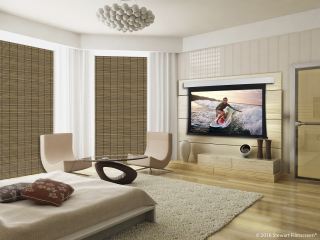Training offered on Internet Protocols within the AV industry
As part of the Association’s drive for Continuous Professional Development, SACIA contracted Mike Dhonau of Training for TV Ltd (UK) to provide training on the use of Internet Protocols in the broadcast environment for its members.
The programme has been adapted from a 3-day theoretical course, run in 2018, to a more comprehensive 4-day course which includes practical components. Known as Practical IP for Broadcast Engineers, the courses focus on Broadcast Engineers and Technicians who need to deal with new IP based systems and covers the basics of IP networking – with plenty of hands-on practice using switches and routers.
The aims of the course are:
- To give broadcast engineers confidence when working on IP based systems.
- To improve communication when working with IP network specialists.
- To provide a fundamental awareness of the issues around cybersecurity.
- To increase understanding of new broadcast/production IP standards and systems.
It is unlikely that anyone planning a new broadcast or production system will not use IP for all, or at least most of it. This means that broadcast engineers need to update their IP networking skills, as well as learning about the new broadcast IP standards and make cybersecurity a central part of their thinking and working.
They will need to work closely with IP network specialists when planning and designing the broadcast and production centres of the future. The training allows delegates to create an IP network with VLANs and resilience, generate and receive multicast audio and video streams, and examine the system using network monitoring tools.
It goes on to look at the new broadcast standards such as SMPTE 2022, SMPTE 2110 and AES67, as well as IEEE1588 PTP and considers the design of networks to carry high bit rate streams.
“Internet protocols have been a vital element in the broadcast and production chain for years, even decades - initially in office functions and databases, then in broadcast control. Finally, real-time audio and video began to be carried over IP, but this was mainly for contribution and distribution and usually used compression to reduce the data rate. Meanwhile, telecoms backbones were also moving to IP,” explains Mike.
“In the last 2 years, new standards, such as SMPTE 2110, have emerged to replace traditional broadcast signals such as SDI and AES3 with real-time IP audio and video within studio and broadcast centres. This is usually uncompressed and has a high bit rate, requiring at least 10GB Ethernet, and in many cases, up to 100GB. At the same time, audio and video timing is moving away from traditional Black & Burst and moving to IEEE1588 PTP (Precision Time Protocol).
Moving to IP creates great opportunities for flexibility in hardware design and workflows, making systems less dependent on location.” “Since the new standards are media format agnostic, we will be able to upgrade to new formats and to mix formats – from SD SDR to Ultra HD HDR without changing the underlying infrastructure. And as we move more signals to IP, the opportunities to make more use of virtualisation and the cloud, both and off premises is growing. Of course, with the increasing use of IP comes the increasing need to think about cybersecurity in all its forms,” he adds.
The programme is run over 4 levels:
- Introduction to IP in Broadcast and Media – 1 day,
- IP for Broadcast Operations – 3 days with practical
- IP for Broadcast Engineers – 3 days
- Practical IP for Broadcast Engineers – 4 days with practical.
Three successful training programmes have been conducted so far in 2019, with an additional four to follow in the months of August and September (Aug 13th, Aug 20th, Oct 8th and Oct 14th).
Although the training is being given in Gauteng, there is potential for it to be rolled out nationally If there is enough demand within the other regions. SACIA will communicate final dates and venues closer to the time.
Homemation Shares Home Cinema Trends and Advice
With the best movies, series, sitcoms and gaming entertainment streaming into millions of homes around the globe, the home theatre is becoming more popular and accessible than ever before. Choosing the right home cinema is key - below are some tips which I hope you will find useful for your audience. Click here to download the images in high res.
The biggest movie stars are moving into TV series and sitcoms due to the popularity of at-home entertainment, thanks to on-demand viewing with the likes of Netflix, Showmax, Black and many others. “Binge watching” the non-stop list of TV favourites and the latest movies has become a very popular pastime. “Along with this trend, there has been a surge of interest in the home cinema products offered by Homemation,” shares Kara Gouveia, Marketing Manager, “from speakers and surround sound to high-end projectors and customised cinemas.” Online gaming has also evolved into a serious hobby; and as millions of avid gamers know, it truly is a richer and more integrated experience on a big screen with excellent sound!
Audio visual entertainment has undergone major changes over the past few years and so has the way in which we enjoy it - within the comfort of our own homes, at the touch of a button, from a tablet or a phone, and even the remote control. This has made an at-home cinema an aspirational and desirable goal for many and a necessity for others. With a fantastic range of options in home entertainment technology to suit a variety of needs and preferences more multimedia consumers can have exactly what they want. However, the most yearned for, is the Stewart projection screen.
For more than 65 years, Stewart has been the consistent choice of discerning clientele around the world. People prefer Stewart projection screens because they want to enjoy the best possible picture-vibrant colour, sharp contrast, and rich detail. It has even won an Academy Award® Oscar and is even in the home of the Oscars®, the state-of-the-art Dolby Theater in Hollywood.
Stewart provides the most immersive experience in the industry and has a projection screen to meet your needs. If you’re considering creating your own in-home cinema, below are some tips from Homemation to help you get the right system in place for your needs. Optimise and customise your home entertainment experience by creating your own entertainment haven. Know your budget. Is it a retrofit or part of a renovation or new build?Do you have the required wiring and power points?
High speed internet with a safe and secure internal networkTake into consideration lighting, curtains or blinds and the windows so that there isn’t a reflection on the screen or wall. The acoustics in the room are affected by high ceilings and open-plan spaces. Sound travels and could cause disturbances with neighbours or household members. Comfort is key and this extends to the furniture you choosePlacement of the screen, projector, speakers and amplifier within the spaceStrive for a balanced and quality sound system A home cinema is an experience you can enjoy every day and an investment in your home and lifestyle. Create your dream space to enjoy with family and friends or just for “me time” whenever you want!
Consult with experts such as Homemation to help you design your ideal space according to your preferences, needs and budget. Homemation are specialists in premium audiovisual, home automation and home theatre products. Whether your goal is to capture the glitz and glamour of Hollywood or to create a stylish modern cinema within a multi-use entertainment media room or developing high-end cinema experiences, it is an intimate and personalised process that they take you through.
Homemation is the exclusive specialist South African suppliers of premium branded audiovisual and home theatre products. The brands in their stable offer some of the most advanced and sought-after AV and home automation technologies in the world.
Call Homemation on 011-781 8887 for your nearest stockist, or visit www.homemation.co.za ; Facebook ; Twitter and Instagram.
Gearhouse SA supplies the 2009 Loerie Awards
After a hotly contested pitch between Margate, Johannesburg, Cape Town and Sun City, the Loeries Committee this year decided to move the awards to the Mother City and to give the event a high glamour, red carpet feel. Themed 'Feed your Ego', the 2009 Loeries poked fun at the sometimes egocentric aspects of the ad industry.



